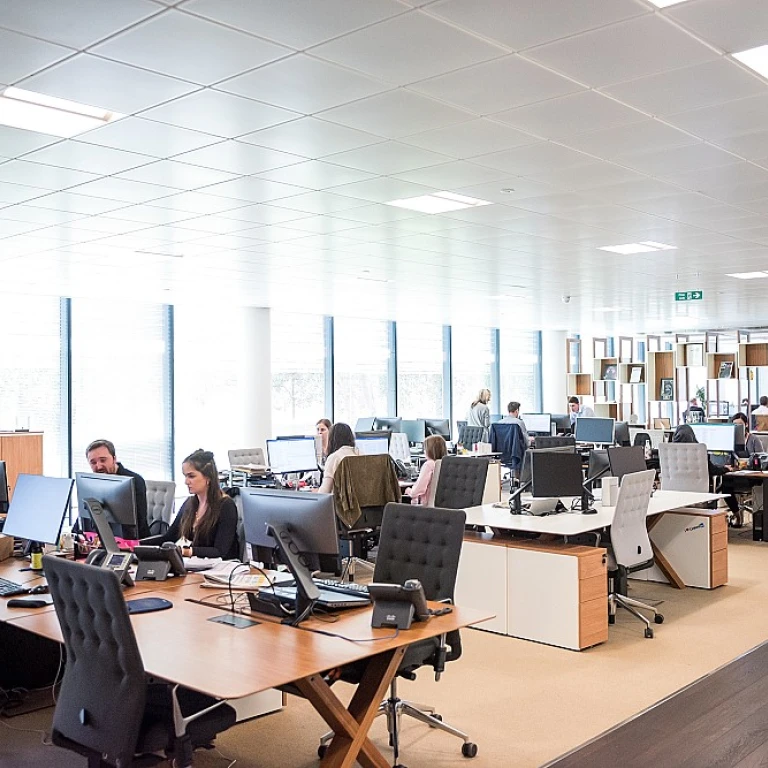
Understanding the Hardware Industry Landscape
Grasping the Dynamics of the Hardware Industry
Understanding the ever-evolving landscape of the hardware industry is crucial for optimizing procurement strategies. In today's market, companies are dealing with a wide array of challenges, from rapid technological advancements to fluctuating demand cycles. With the pace of innovation accelerating, businesses must sharpen their procurement processes to stay competitive. Incorporating best practices in your procurement management can enhance efficiency and reduce costs substantially. This involves leveraging technology at various stages of the procurement process, as well as fostering strong supplier relationships to ensure a reliable supply chain. Efficient asset management and inventory management are also significant components of this equation. The hardware industry involves complex supply chain dynamics that demand robust strategies for supplier relationship management and asset lifecycle management. Companies that excel in procurement often exhibit excellence in maintaining equipment and devices through their life cycle, thus ensuring long-term performance and cost efficiency. Furthermore, understanding the nuances of hardware procurement is vital. This encompasses aspects like asset tracking, managing purchase orders, and setting favorable payment terms. By aligning these elements with strategic procurement best practices, companies can position themselves as leaders in their respective sectors. For businesses keen on enhancing operational efficiency, exploring strategies for IT support can also be beneficial. Enhancing efficiency in IT support within the manufacturing sector is a key consideration, as it intricately ties with procurement in hardware settings.Key Components of a Successful Procurement Strategy
Identifying Core Elements for Planning
In the inherently competitive environment of the hardware industry, structuring a procurement strategy is imperative to achieve optimal performance and cost-efficiency. Successful procurement is centered around several core components that help companies effectively manage this complex process.
Establishing Strong Supplier Relationships
A crucial element of a robust procurement strategy is forging strong supplier relationships. These partnerships are vital for ensuring timely and cost-effective access to goods and services. By cultivating long term relationships, companies can negotiate favorable payment terms and secure priority access to essential components.
Implementing Efficient Inventory Management
Efficient inventory management helps minimize product costs and optimize supply chain operations. Implementing real-time inventory tracking and demand forecasting can boost procurement workflows, ensuring the availability of the necessary equipment and minimizing storage costs. Keeping an optimal inventory balance aligns purchases with demand fluctuations, helping companies maintain their competitive edge.
Integrating Comprehensive Asset Management
Asset management is another key feature. By monitoring the asset lifecycle, businesses can effectively schedule maintenance and replacements, prolonging the life of their hardware assets. This process helps maintain equipment performance, reduces downtime, and contributes to the company’s overall efficiency.
Streamlining the Procurement Process
Streamlined purchasing practices, such as clear purchase order protocols and consistent review processes, ensure that procurement activities are efficient and reliable. Companies can utilize specialized procurement software to manage this process, reducing human error and enhancing accuracy.
For more insights into enhancing efficiency in business operations, you can check this guide on enhancing online visibility.
Leveraging Technology in Procurement
Integrating Technological Solutions in Procurement
In the hardware industry, leveraging technology is crucial for optimizing procurement strategies. Today, businesses must adapt to modern technological advancements to maintain their competitive edge and enhance operational efficiency. From procurement management software to advanced asset tracking systems, integrating these tools can significantly streamline the procurement process and reduce costs. Implementing procurement software allows companies to automate purchase requests, manage purchase orders effectively, and establish clear payment terms with suppliers. This software enables the efficient handling of procurement best practices, ensuring that every purchase aligns with the business strategy and expected costs. Additionally, it provides insights into supplier performance and enhances inventory management, allowing companies to adapt quickly to changes in supply or demand. Asset lifecycle management is another critical aspect that technology facilitates. Proper management of hardware assets not only involves immediate acquisition but also considers their long-term maintenance and eventual disposal. Leveraging technology enables businesses to implement lifecycle management practices that maximize asset utilization while minimizing waste. This ensures that every piece of hardware procured will serve its intended purpose throughout its useful life, contributing to sustainability efforts. Moreover, strong supplier relationships are pivotal. Technology bridges the gap between buyers and suppliers through effective communication channels, fostering collaboration and trust. By using technology, companies can gather real-time data on supplier reliability, which aids in making informed decisions and managing potential supply chain risks efficiently. Organizations must continuously evaluate their procurement processes, integrating the latest technological solutions where necessary to remain agile. As the hardware industry evolves, adapting these innovations will ensure that companies not only meet their current needs but also anticipate future demands. For more insights into optimizing your office with essential IT equipment, have a look at the comprehensive guide here.Sustainability in Hardware Procurement
Eco-Friendly Practices for Sustainable Procurement
As the global consciousness shifts towards sustainability, the hardware industry is no exception to this trend. To align business practices with environmental responsibilities, incorporating sustainability into hardware procurement strategies is essential. This involves evaluating the entire asset lifecycle, from acquisition to disposal. By doing so, companies can ensure they minimize environmental impacts while enhancing overall business performance.
Integrating Sustainability into Supplier Relationships
Building strong supplier relationships is crucial for successful sustainability initiatives. By prioritizing suppliers committed to eco-friendly practices, such as using sustainably sourced materials or implementing green manufacturing processes, companies can ensure that their procurement process aligns with their sustainability goals. Open communication and clear expectations on environmental standards can also lead to long-term partnerships, ultimately benefiting both the business and the supplier.
Reducing Environmental Impact Through Asset Management
- Efficient Asset Tracking: Implement systems to monitor the usage and maintenance of devices and equipment, ensuring they operate at optimal efficiency while reducing wastage.
- Lifecycle Management: Consider the entire lifecycle of a product during procurement, seeking options that offer longevity and reduced environmental impact.
- End-of-Life Disposal: Develop a strategy for responsibly disposing of or recycling hardware at the end of its life, reducing landfill contributions and recovering valuable materials where possible.
Integrating sustainability into hardware procurement not only fulfills corporate social responsibility but can also lead to cost reductions and improved efficiency. By focusing on these sustainable practices, companies can significantly optimize their hardware procurement processes while contributing positively to both their bottom line and the environment.












